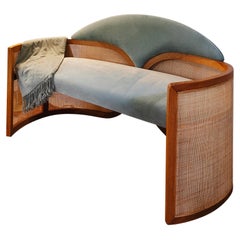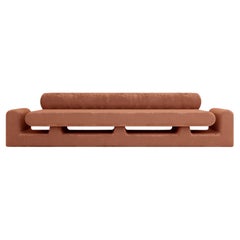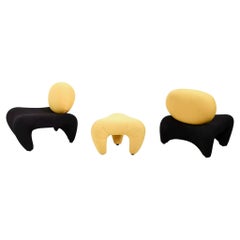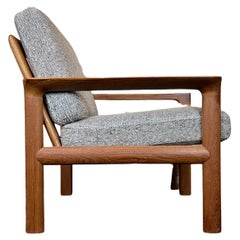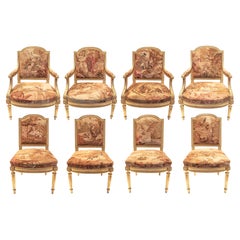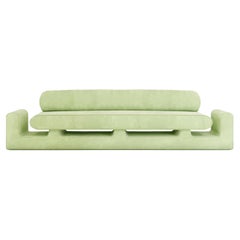Middle East - Living Room Sets
5
2
to
2,477
445
7
2
2
1
1
1
1
1
5
1
1
Height
to
Width
to
Depth
to
6
2
2
2
2
2
2
3
2
2
2
2
6
4
3
1
1
5
5
3
2
2
1
1
Item Ships From: Middle East
Hug Green Sofa by Rejo Studio
Located in Geneve, CH
Hug green sofa by Rejo Studio.
Dimensions: D 315 x W 95 x H 76 cm.
Materials: wooden structure, with velvet.
Also available in different colours.
Long comfortable hug. The hug sofa...
Category
2010s Saudi Arabian Post-Modern Middle East - Living Room Sets
Materials
Velvet, Wood
Cross My Heart Loveseat by Carla Baz
By Carla Baz
Located in Geneve, CH
Cross My Heart Loveseat by Carla Baz
Dimensions: W 160 X D 70 X H 82 CM
Weight: 55 kg
Material: French Oak, Entirely handcrafted in solid French oak woo...
Category
2010s Lebanese Post-Modern Middle East - Living Room Sets
Materials
Oak
Lounge Set by Sven Ellekaer for Skippers Mobler A/S Design, 1960s, Denmark
By Sven Ellekaer
Located in תל אביב - יפו, IL
Stunning Mid-Century modern Scandinavian lounge set by Sven Ellekaer for Skippers Mobler A/S Design, 1960s Denmark.
There is a three-seater sofa and one lounge chair. Made of solid Rosewood and brown leather in excellent condition. The lounge charis...
Category
1960s Danish Mid-Century Modern Vintage Middle East - Living Room Sets
Materials
Leather, Rosewood
Titi 01 Table and Stool by Mary-Lynn & Carlo
Located in Geneve, CH
TITI 01 table and stool by Mary-Lynn & Carlo, 2021.
The Elephant Project.
Dimensions: stool H 42 x W 42 x D 42 cm.
Table H 45 x W 98 x D 35 cm.
Materials: concrete colored, foam...
Category
2010s Lebanese Modern Middle East - Living Room Sets
Materials
Concrete
Hug Brown Sofa by Rejo Studio
Located in Geneve, CH
Hug Brown Sofa by Rejo Studio
Dimensions: D 315 x W 95 x H 76 cm
Materials: Wooden structure, with Velvet
Also Available in different colours.
Long co...
Category
2010s Saudi Arabian Post-Modern Middle East - Living Room Sets
Materials
Velvet, Wood
Hug Grey Sofa by Rejo Studio
Located in Geneve, CH
Hug grey sofa by Rejo Studio
Dimensions: D 315 x W 95 x H 76 cm
Materials: Wooden structure, with Velvet
Also available in different colours.
Long comfortable hug. The hug sofa...
Category
2010s Saudi Arabian Post-Modern Middle East - Living Room Sets
Materials
Velvet, Wood
Set of Giltwood 4 Fauteuils and 4 Side Chairs with Aubusson Upholstery
By Aubusson Manufacture
Located in Dubai, AE
Giltwood seating set comprising of four side chairs and four armchairs. All Aubusson's needlework back and seats depict scenes from Aesop's Fables.
There is a long tradition of man...
Category
19th Century French Louis XVI Antique Middle East - Living Room Sets
Materials
Upholstery, Giltwood
Related Items
Living Room Mod. “She” by a. & C. Bartoli and Prod by Rossi di Albizzate, 2000s
By Bartoli Design, Rossi di Albizzate
Located in Bresso, Lombardy
This living room set was designed by Anna and Carlo Bartoli and produced by Rossi di Albizzate, Italy, 2000s.
The set is upholstered in fabric and features rigid plastic feet.
With ...
Category
Early 2000s Italian Middle East - Living Room Sets
Materials
Fabric, Plastic
H 28.75 in W 25.6 in D 29.53 in
60s 70s Teak Easy Chair Sven Ellekaer for Komfort Design Denmark
By Komfort, Sven Ellekaer
Located in Neuenkirchen, NI
60s 70s Teak Easy Chair Sven Ellekaer for Komfort Design Denmark
Object: Easy Chair
Manufacturer: comfort
Condition: good - vintage
Age: around 1960-1970
Dimensions:
Width = 76...
Category
1970s Danish Vintage Middle East - Living Room Sets
Materials
Fabric, Teak
Papa Bear Lounge Chair by Svend Skipper for Skippers Møbler, 1960s
By Svend Skipper
Located in Torino, Piemonte
Impressive lounge chair designed by Svend Skipper and manufactured by Skipper Møbler in the 1960s, with teak legs and nails, newly upholstered with Casamance wool.
Category
1960s Danish Vintage Middle East - Living Room Sets
Materials
Wool, Teak
Jacques Charpentier Loveseat & Lounge Chair in Beige Ultrasuede 1970 France
By Jacques Charpentier
Located in Miami, FL
French Mid-Century Modern low sofa and matching lounge chair designed by Jacques Charpentier.
Upholstered in beige Ultrasuede and featu...
Category
1970s French Mid-Century Modern Vintage Middle East - Living Room Sets
Materials
Chrome
Pair of Venetian Armchairs and Stool
Located in Leamington Spa, Warwickshire
Pair of 19th C Venetian hand-painted armchairs and stool with traces of the original paint showing through. 1880.
Stool dimensions: 20.5"W x 15"D x 17.5"H
Chair dimensions are be...
Category
19th Century Italian Antique Middle East - Living Room Sets
Materials
Wood
Sven Ellekaer 3 legs Lounge chair and footstool for Mobelfabrik Denmark 1960
By Sven Ellekaer
Located in Paris, FR
Sven Ellekaer Lounge chair and footstool in rosewood made in Denmark around 1960
This very rare lounge chair was designed by Sven Ellekaer and produced by Christian Linneberg Møbelfa...
Category
1960s Danish Scandinavian Modern Vintage Middle East - Living Room Sets
Materials
Rosewood, Leather
"Ploum" Loveseat by R. & E. Bouroullec for Ligne Roset
By Ligne Roset
Located in Dallas, TX
Ploum Loveseat by Ligne Roset. Design by R. & E. Bouroullec. A result of a special combination of two materials: a stretchable covering and ultra-soft foam. This combination, along w...
Category
Late 20th Century Post-Modern Middle East - Living Room Sets
Materials
Fabric, Foam
Lounge Italian Set Sofa and Two Armchairs Design Gigi Radice for Minotti, 1960s
By Minotti, Gigi Radice
Located in taranto, IT
Complete living room with curved sofa and pair of armchairs, design Gigi Radice for Minotti Arredamenti, early 1960s
Mustard yellow color
the sofa measures 240 cm in length (fr...
Category
1960s Italian Vintage Middle East - Living Room Sets
Materials
Brass
H 39.38 in W 94.49 in D 27.56 in
Hug Sofa Upholstered, Chubby Arms by Rejo Studio
By REJO design studio
Located in Riyadh, SA
Long comfortable hug. The hug sofa features two welcoming chubby arms and a magical handy space for your books.
This has been handcrafted at our studio. Part ...
Category
2010s Saudi Arabian Modern Middle East - Living Room Sets
Materials
Wool, Velvet
1960s Sven Ellekaer Brown Leather Chairs For Coja
By Sven Ellekaer , Coja Culemborg
Located in ŚWINOUJŚCIE, 32
Set of 2 Coja armchairs by the Swedish designer Sven Ellekaer.
The chocolate brown leather is in very good condition.
Soft seating comfort from the 1960s.
Price for pair.
Category
Mid-20th Century Swedish Scandinavian Modern Middle East - Living Room Sets
Materials
Leather
Svend Skipper “Model 91” Lounge Chair for Skippers Møbler, Denmark 1960s
By Svend Skipper
Located in Utrecht, NL
This chair is the most recognizable model of Danish designer and manufacturer, Svend Skipper, and a great example of the mid-century design era. Skipper only created commissioned pie...
Category
1960s Danish Mid-Century Modern Vintage Middle East - Living Room Sets
Materials
Wool, Wood
H 38.59 in W 31.3 in D 34.06 in
Carlo Scarpa Iroko Wood and Green Velvet Cornaro Sofa for Studio Simon, 1974
By Carlo Scarpa, Studio Simon
Located in Vicenza, IT
Cornaro two-seater sofa, designed by Carlo Scarpa and manufactured by Studio Simon in 1974.
Made of Iroko wood, foam, and azure chenille velvet.
Excellent vintage condition.
Born in Venice on June 2nd, 1906, Carlo Scarpa began working very early. Only a year after he had first qualified as an architect in 1926, he began working for the Murano glassmakers Cappellin & Co. in a consultative capacity; from 1927, he began to experiment with the Murano glass, and this research not only gave him excellent results here but would also inform his progress for many years to come. Between 1935 and 1937, as he entered his thirties, Carlo Scarpa accepted his first important commission, the renovation of Venice’s Cà Foscari. He adapted the spaces of this stately University building which stands on the banks of the Grand Canal, creating rooms for the Dean’s offices and a new hall for academic ceremonies; Mario Sironi and Mario De Luigi were charged with doing the restoration work on the frescos. After 1945, Carlo Scarpa was constantly busy with new commissions, including various furnishings and designs for the renovation of Venice’s Hotel Bauer and designing a tall building in Padua and a residential area in Feltre, all worth mentioning. One of his key works, despite its relatively modest diminished proportions, was the first of many works which were to follow in the nineteen fifties: the [bookshop known as the] Padiglione del Libro, which stands in Venice’s Giardini di Castello and shows clearly Scarpa’s passion for the works of Frank Lloyd Wright. In the years which were to follow, after he had met the American architect, Scarpa repeated similar experiments on other occasions, as can be seen, in particular, in the sketches he drew up in 1953 for villa Zoppas in Conegliano, which show some of his most promising work. However, this work unfortunately never came to fruition. Carlo Scarpa later created three museum layouts to prove pivotal in how twentieth-century museums were set up from then on. Between 1955 and 1957, he completed extension work on Treviso’s Gipsoteca Canoviana [the museum that houses Canova’s sculptures] in Possagno, taking a similar experimental approach to the one he used for the Venezuelan Pavilion at [Venice’s] Giardini di Castello which he was building at the same time (1954-56). In Possagno Carlo Scarpa was to create one of his most incredible ever works, which inevitably bears comparison with two other museum layouts that he was working on over the same period, those of the Galleria Nazionale di Sicilia, housed in the Palazzo Abatellis in Palermo (1953-55) and at the Castelvecchio in Verona (1957- 1974), all of which were highly acclaimed, adding to his growing fame. Two other buildings, which are beautifully arranged in spatial terms, can be added to this long list of key works that were started and, in some cases, even completed during the nineteen fifties. After winning the Olivetti Award for architecture in 1956, Scarpa began work in Venice’s Piazza San Marco on an area destined to house products made by the Industrial manufacturers Ivrea. Over the same period (1959-1963), he also worked on renovating and restoring the gardens and ground floor of the Fondazione Querini Stampalia in Venice, which many consider one of his greatest works. While he worked on-site at the Fondazione Querini Stampalia, Carlo Scarpa also began building a villa in Udine for the Veritti family. To shed some light on how much his work evolved over the years, it may be useful to compare this work with that of his very last building, villa Ottolenghi Bardolino, which was near completion at the time of his sudden death in 1978. Upon completion of villa Veritti over the next ten years, without ever letting up on his work on renovation and layouts, Scarpa accepted some highly challenging commissions which were to make the most of his formal skills, working on the Carlo Felice Theatre in Genoa as well as another theatre in Vicenza.
Towards the end of this decade, in 1969, Rina Brion commissioned Carlo Scarpa to build the Brion Mausoleum in San Vito d’Altivole (Treviso), a piece he continued to work on right up until the moment of his death. Nevertheless, even though he was totally absorbed by work on this mausoleum, plenty of other episodes can offer some insight into the final years of his career. As work on the San Vito d’Altivole Mausoleum began to lessen in 1973, Carlo Scarpa started building the new headquarters for the Banca Popolare di Verona. He drew up plans that were surprisingly different from the work he carried out simultaneously on the villa Ottolenghi. However, the plans Carlo Scarpa drew up, at different times, for a monument in Brescia’s Piazza della Loggia commemorating victims of the terrorist attack on May 28th, 1974, make a sharp contrast to the work he carried out in Verona, almost as if there is a certain hesitation after so many mannered excesses. The same Pietas that informs his designs for the Piazza Della Loggia can also be seen in the presence of the water that flows through the Brion Mausoleum, almost as if to give a concrete manifestation of pity in this twentieth-century work of art. Carlo Scarpa has put together a highly sophisticated collection of structures occupying the mausoleum’s L-shaped space stretching across both sides of the old San Vito d’Altivole cemetery. A myriad of different forms and an equally large number of different pieces, all of which are separate and yet inextricably linked to form a chain that seems to offer no promise of continuity, arising out of these are those whose only justification for being there is to bear the warning “si vis vitam, para mortem,” [if you wish to experience life prepare for death] as if to tell a tale that suggests the circle of time, joining together the commemoration of the dead with a celebration of life. At the entrance of the Brion Mausoleum stand the “propylaea,” followed by a cloister that ends by a small chapel, with an arcosolium bearing the family sarcophagi, the central pavilion, held in place on broken cast iron supports, stands over a mirror-shaped stretch of water and occupies one end of the family’s burial space. The musical sound of the walkways, teamed with the luminosity of these harmoniously blended spaces, shows how, in keeping with his strong sense of vision, Carlo Scarpa could make the most of all his many skills to come up with this truly magnificent space. As well as an outstanding commitment to architectural work, with the many projects we have already seen punctuating his career, Carlo Scarpa also made many equally important forays into the world of applied arts. Between 1926 and 1931, he worked for the Murano glassmakers Cappellin, later taking what he had learned with him when he went to work for the glassmakers Venini from 1933 until the 1950s. The story of how he came to work on furniture design is different, however, and began with the furniture he designed to replace lost furnishings during his renovation of Cà Foscari. The later mass-produced furniture started differently, given that many pieces were originally one-off designs “made to measure.” Industrial manufacturing using these designs as prototypes came into being thanks to the continuity afforded him by Dino Gavina, who, as well as this, also invited Carlo Scarpa to become president of the company Gavina SpA, later to become SIMON, a company Gavina founded eight years on, in partnership with Maria Simoncini (whose own name accounts for the choice of company name). Carlo Scarpa and Gavina forged a strong bond in 1968 as they began to put various models of his into production for Simon, such as the “Doge” table, which also formed the basis for the “Sarpi” and “Florian” tables. In the early seventies, other tables that followed included “Valmarana,” “Quatour,” and “Orseolo.” While in 1974, they added a couch and armchair, “Cornaro,” to the collection and the “Toledo” bed...
Category
1970s Italian Mid-Century Modern Vintage Middle East - Living Room Sets
Materials
Velvet, Foam, Chenille, Wood
H 25.6 in W 86.62 in D 34.26 in
Previously Available Items
Set of Giltwood 4 Fauteuils and 4 Side Chairs with Aubusson Upholstery
By Aubusson Manufacture
Located in Dubai, AE
Giltwood seating set comprising of four side chairs and four armchairs. All Aubusson's needlework back and seats depict scenes from Aesop's Fables.
There is a long tradition of man...
Category
19th Century French Louis XVI Antique Middle East - Living Room Sets
Materials
Upholstery, Giltwood
H 38.59 in W 25.99 in D 25.99 in
Hug Green Sofa by Rejo Studio
Located in Geneve, CH
Hug green sofa by Rejo Studio.
Dimensions: D 315 x W 95 x H 76 cm.
Materials: wooden structure, with velvet.
Also available in different colours.
Long comfortable hug. The hug...
Category
2010s Saudi Arabian Post-Modern Middle East - Living Room Sets
Materials
Velvet, Wood
Recently Viewed
View AllMore Ways To Browse
Antique 3 Piece Suites
1950s Animal Skin Living Room Sets
Chesterfield Suite Set
Vintage Livingroom Chairs
Giltwood Carved Salon Suite
Wicker 3 Piece Couch
Antique Parlor Chairs Set
Three Piece Salon Suite
Beige French Living Room Sets
North American Hardwood Living Room Sets
4 X Salon Chairs
Polar Lounge Chair
Ficks Reed Living Room Set
Beige Animal Skin Living Room Sets
German Animal Skin Living Room Sets
Victorian Rosewood Living Room Sets
Gray Leather Living Room Sets
The Tired Man Lounge Chair

